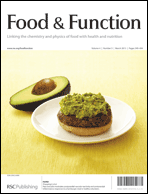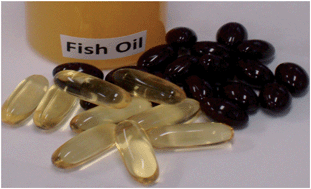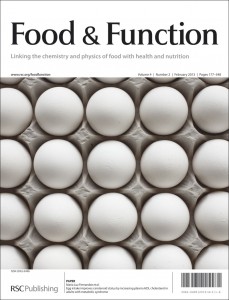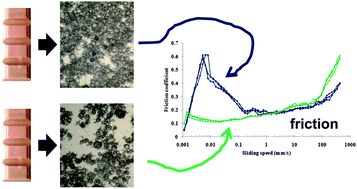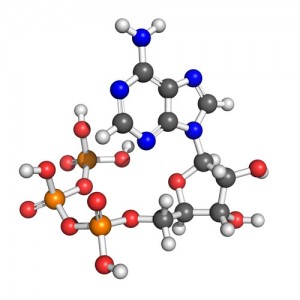Do you want to know what your colleagues were reading during 2012? The following articles in Food & Function were the most accessed over the course of the year:
Nuts, especially walnuts, have both antioxidant quantity and efficacy and exhibit significant potential health benefits
Joe A. Vinson and Yuxing Cai
Food Funct., 2012, 3, 134-140
DOI: 10.1039/C2FO10152A, Paper
Anti-inflammatory activity of natural dietary flavonoids
Min-Hsiung Pan, Ching-Shu Lai and Chi-Tang Ho
Food Funct., 2010, 1, 15-31
DOI: 10.1039/C0FO00103A, Review Article
Transcription profiles of LPS-stimulated THP-1 monocytes and macrophages: a tool to study inflammation modulating effects of food-derived compounds
Wasaporn Chanput, Jurriaan Mes, Robert A. M. Vreeburg, Huub F. J. Savelkoul and Harry J. Wichers
Food Funct., 2010, 1, 254-261
DOI: 10.1039/C0FO00113A, Paper
Effects of tea and coffee on cardiovascular disease risk
Siv K Bøhn, Natalie C Ward, Jonathan M Hodgson and Kevin D Croft
Food Funct., 2012, 3, 575-591
DOI: 10.1039/C2FO10288A, Review Article
Espresso coffees, caffeine and chlorogenic acid intake: potential health implications
Thomas W. M. Crozier, Angelique Stalmach, Michael E. J. Lean and Alan Crozier
Food Funct., 2012, 3, 30-33
DOI: 10.1039/C1FO10240K, Paper
Review of in vitro digestion models for rapid screening of emulsion-based systems
David Julian McClements and Yan Li
Food Funct., 2010, 1, 32-59
DOI: 10.1039/C0FO00111B, Review Article
Whole grain cereals: functional components and health benefits
Rafael Borneo and Alberto Edel León
Food Funct., 2012, 3, 110-119
DOI: 10.1039/C1FO10165J, Review Article
Development of oral food-grade delivery systems: Current knowledge and future challenges
Revital Cohen Benshitrit, Carmit Shani Levi, Sharon Levi Tal, Eyal Shimoni and Uri Lesmes
Food Funct., 2012, 3, 10-21
DOI: 10.1039/C1FO10068H, Review Article
The metabolism and analysis of isoflavones and other dietary polyphenols in foods and biological systems
Stephen Barnes, Jeevan Prasain, Tracy D’Alessandro, Ali Arabshahi, Nigel Botting, Mary Ann Lila, George Jackson, Elsa M. Janle and Connie M. Weaver
Food Funct., 2011, 2, 235-244
DOI: 10.1039/C1FO10025D, Review Article
Insights into the metabolism and microbial biotransformation of dietary flavan-3-ols and the bioactivity of their metabolites
Maria Monagas, Mireia Urpi-Sarda, Fernando Sánchez-Patán, Rafael Llorach, Ignacio Garrido, Carmen Gómez-Cordovés, Cristina Andres-Lacueva and Begoña Bartolomé
Food Funct., 2010, 1, 233-253
DOI: 10.1039/C0FO00132E, Review Article
Take a look at the articles and then post your thoughts and comments below.
Interested in submitting your own work to Food & Function? Submit online today, or email us with your suggestions.












